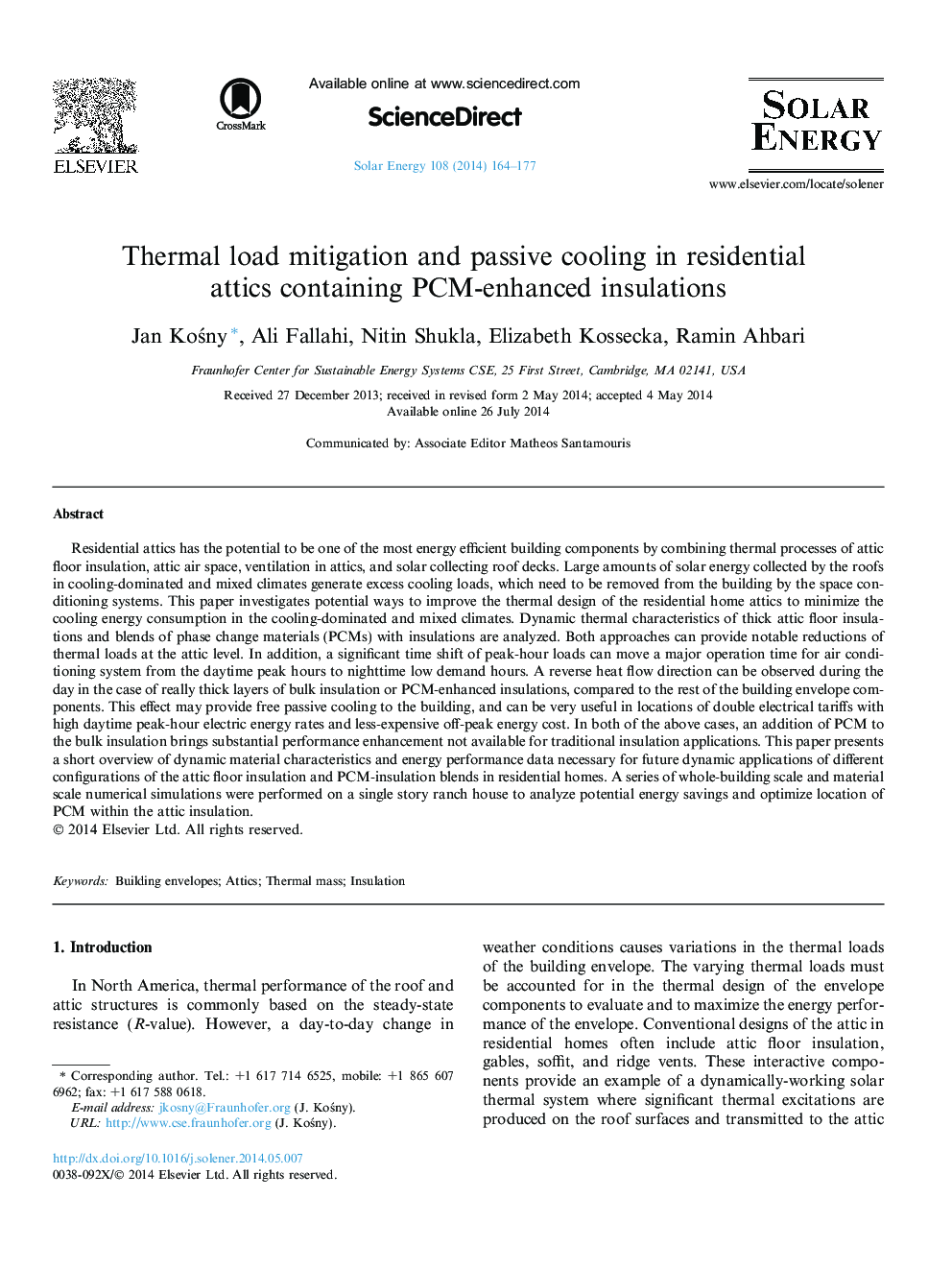| Article ID | Journal | Published Year | Pages | File Type |
|---|---|---|---|---|
| 1549871 | Solar Energy | 2014 | 14 Pages |
•Attic configurations using PCM-enhanced insulation were analyzed for Southern U.S.•PCM-enhanced attic insulation assemblies reduce peak hour loads by 25–35%.•PCM-enhanced insulation may generate a reversed heat flow.•Concentrated PCM application yields a 5-h cooling peak load time shift.•Passive cooling effect of PCM systems may reach ∼25% of a total daily heat gain.
Residential attics has the potential to be one of the most energy efficient building components by combining thermal processes of attic floor insulation, attic air space, ventilation in attics, and solar collecting roof decks. Large amounts of solar energy collected by the roofs in cooling-dominated and mixed climates generate excess cooling loads, which need to be removed from the building by the space conditioning systems. This paper investigates potential ways to improve the thermal design of the residential home attics to minimize the cooling energy consumption in the cooling-dominated and mixed climates. Dynamic thermal characteristics of thick attic floor insulations and blends of phase change materials (PCMs) with insulations are analyzed. Both approaches can provide notable reductions of thermal loads at the attic level. In addition, a significant time shift of peak-hour loads can move a major operation time for air conditioning system from the daytime peak hours to nighttime low demand hours. A reverse heat flow direction can be observed during the day in the case of really thick layers of bulk insulation or PCM-enhanced insulations, compared to the rest of the building envelope components. This effect may provide free passive cooling to the building, and can be very useful in locations of double electrical tariffs with high daytime peak-hour electric energy rates and less-expensive off-peak energy cost. In both of the above cases, an addition of PCM to the bulk insulation brings substantial performance enhancement not available for traditional insulation applications. This paper presents a short overview of dynamic material characteristics and energy performance data necessary for future dynamic applications of different configurations of the attic floor insulation and PCM-insulation blends in residential homes. A series of whole-building scale and material scale numerical simulations were performed on a single story ranch house to analyze potential energy savings and optimize location of PCM within the attic insulation.
